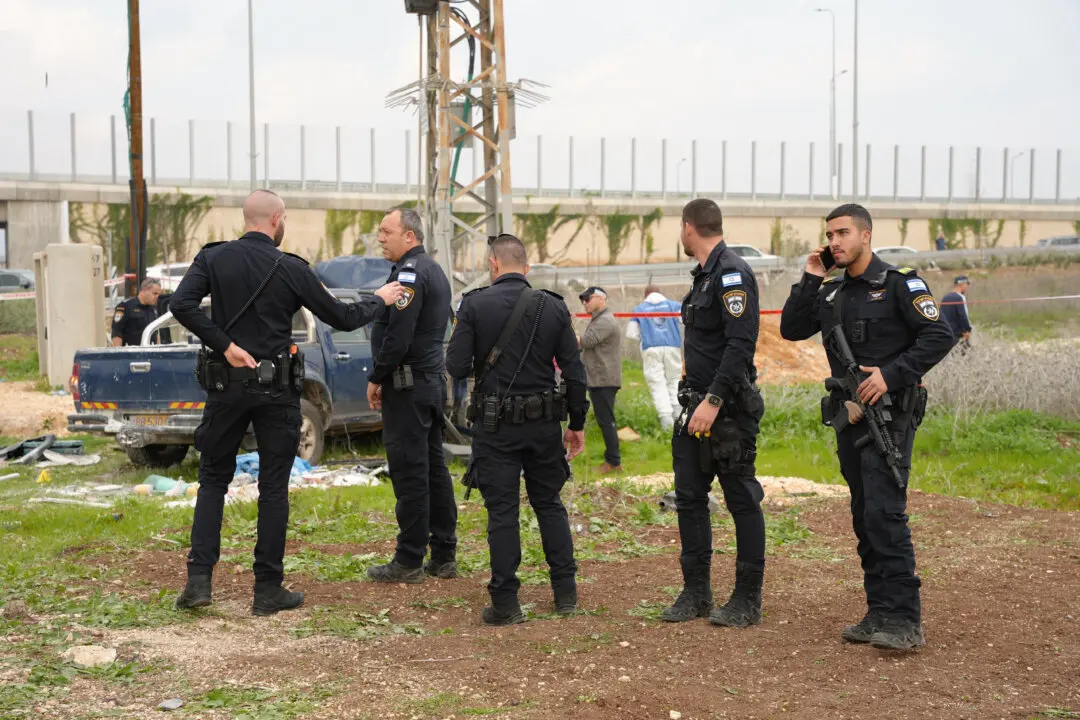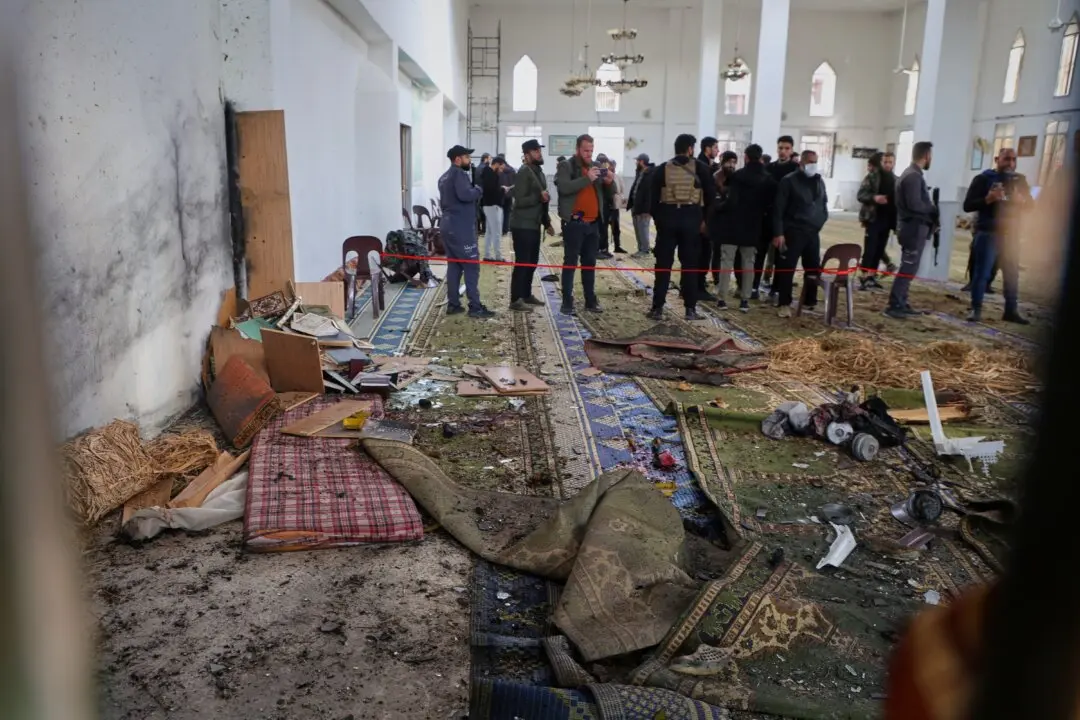MOSCOW—Russia on Monday released footage from one of its drones in Syria, revealing for the first time the latest destruction to the ruins of historic Palmyra since it was recaptured by ISIS terrorists, as Syrian government forces pushed ahead on the ground in a new offensive to take the city back.
Syrian troops have advanced close to within 20 kilometers (12 miles) of the UNESCO heritage site for which Palmyra is famous and which has already suffered massive destruction at the hands of the ISIS terrorist group.
The drone footage, released in Moscow, showed ISIS militants have badly damaged the facade of the Roman-era theater and the Tetrapylon—a set of four monuments with four columns each at the center of the colonnaded road leading to the theater.
The video appears to show that only two of the 16 columns remain standing.
The footage also recorded sustained truck movements around the archaeological site, suggesting the militants could be preparing for further demolitions by bringing in explosives, warned the Russian Defense Ministry. It said Russian warplanes last week carried out more than 90 sorties to provide air cover for the offensive.






